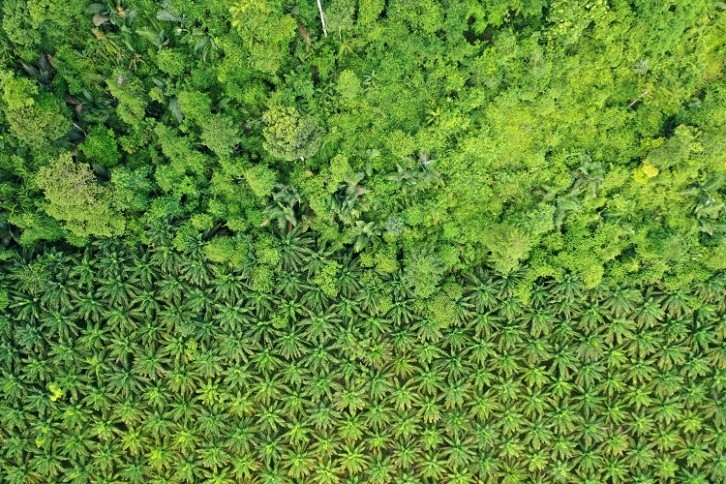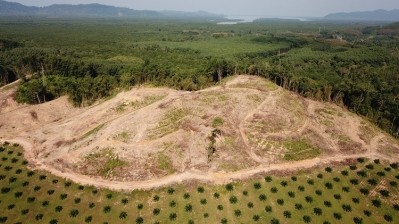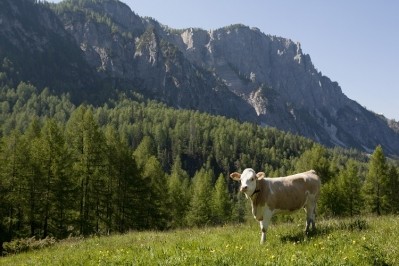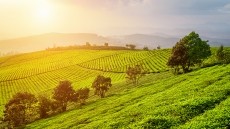Which crops are least prepared for the EUDR deadline?

In less than five months’ time, the European Deforestation Regulation (EUDR) will be enforced. That means that as of 30 December, business operators will be required to prove products containing specific commodities are deforestation-free.
They’ll also need to prove that those products – whether containing palm oil, cocoa, coffee, soy, beef, rubber, and/or wood – were grown legally according to the land of production.
Time is running out, and some food crop sectors are in a better place than others. Wood, rubber, and beef aside, which commodity is the most – and least – prepped for EUDR?
Palm oil most prepared for EUDR
Interestingly, the food commodity most prepared for the impending EUDR deadline is also one with a major reputation for deforestation: palm oil.
Recent research in the Global North, where palm oil is imported, reveals most consumers associated palm oil with the environmental impacts of its cultivation, for example ‘rainforest deforestation’ or ‘environmentally damaging’.
But this muddied reputation – which is justified for irresponsible sourcing methods, a major driver of deforestation in biodiverse regions – has likely also served to prepare the sector for EUDR.
“Palm oil seems to be the sector that is the most prepared for the EUDR, probably thanks to the many years of work they have been doing on traceability and supplier assessments,” says Charlotte Opal, director of memberships and partnerships at Earthworm Foundation, an NGO working with business to encourage sustainable practices on the ground.
But are unintended consequences at play?
But there are concerns that operators may opt for less-risky suppliers – both in terms of limiting the number of players in the supply chain and opting for lower-risk areas – to more easily comply with EUDR.
If smallholder farmers are ignored, deforestation will likely continue.
Assessing EUDR commodities
The EUDR covers palm oil, cocoa, coffee, soy, beef, rubber, and wood.
In this article, FoodNavigator is focusing on the preparedness of the food crops and ingredients in the list only: palm oil, cocoa, coffee, and soy.
In the palm oil sector, Earthworm Foundation has observed European supply chains ‘shifting around’ to provide segregated supply chains from plantations established ‘far before’ the cutoff date. European operators appear to be favouring supply chains with a minimum number of smallholders, so as to avoid having to provide complex paperwork.
While limiting the number of smallholders in the supply chain makes it easier for operators to comply, from a bureaucratic perspective, it suggests an unintended consequence of EUDR may be at play.
“This exclusion of smallholders is an unfortunate side effect of the regulation,” adds Opal.
Between cocoa and coffee, which is the least prepared?
Both cocoa and coffee are drivers of deforestation in biodiverse regions, and neither sector appears as prepared for EUDR as palm oil. But then again, neither commodity has faced the public scrutiny of palm oil in recent years.
Although similarities exist between cocoa and coffee – they’re both grown under forest canopies in tropical regions – there is a ‘significant’ difference in readiness between coffee and cocoa supply chains under the EUDR, particularly regarding traceability.
Certified coffee supply chains are generally already operating at traceability levels suitable for compliance by the deadline, according to Michelle Deugd, director of forests and agriculture at certification NGO Rainforest Alliance (RA).
“However, countries with many smallholder farmers may face more hurdles in achieving this.”

Earthworm Foundation has observed that in coffee, some countries are more prepared than others. “There are some great country-level initiatives like what the government of Tanzania is doing to map out all coffee farmers; we’d like to see more of that,” reveals Opal.
“Unfortunately, it seems that many traders have not figured out how to share data pre-competitively so there is a lot of ‘double work’ going on with multiple companies collecting the same info from the same farmers.”
Coffee may lead on traceability, but cocoa leads on geolocation data
Conversely, cocoa supply chains are mostly operating at traceability levels that do not align with the EUDR, explains RA’s Duegd.
But in some ways, cocoa is ahead of the game. RA has observed that the cocoa sector is more advanced than coffee in gathering geolocation data, due to past sector-wide initiatives that advanced this information collection in certain cocoa-producing countries.

For both commodities, cocoa and coffee, it’s critical that smallholders are supported in adapting to these new EUDR requirements, contends Duegd. RA, like Earthworm Foundation, is concerned about unintended consequences associated with Europe’s deforestation regulation.
“Smallholder farmers, who make up over 90% of Rainforest Alliance producers, are the economic backbone of many countries relied upon by the EU for commodity imports. Losing access to the EU market could have severe social and economic repercussions for communities dependent on revenues from exports to the EU,” we’re told.
“Despite the EUDR’s intention to promote better practices, smallholders may face income gaps and feel compelled to encroach further into forests to increase the volume of cocoa that they can sell overall or sell to less discerning markets to sustain their families.”
And what about soy? Ready for EUDR or not?
Unlike palm oil, cocoa, and coffee, soy cultivation is dominated by large-scale famers. It’s estimated that across the US, Brazil, and Argentina, which account for the vast majority of total soybean production, more than 80% is produced by large-scale farmers.
It’s therefore surprising that the soy sector – considered one of the most industrial of the EUDR commodities, and dominated by large producers – is far from compliance.
Are seven EUDR commodities enough?
Currently, seven commodities fall under the incoming European Deforestation Regulation: palm oil, cocoa, coffee, soy, beef, rubber, and wood. But some argue the list is missing one: maize.
Maize – otherwise known as corn – is a growing contributor to the deforestation footprint, according to environmental organisation Fern.
“I think in the future we would expect the EU to conduct an evidence-based assessment of which commodities are actually contributing the most to the EU’s deforestation footprint, in particular maize,” Fern’s forests and agriculture campaigner Julia Christian recently told FoodNavigator.
That’s the perspective of Earthworm Foundation, which has observed that while big producing countries already have farms mapped, ‘surprisingly little’ supply chain traceability work has been undertaken for ‘such a well-resourced sector’.
“We see these sectors really scrambling.”
Why? Earthworm’s Opal suspects one possible reason could be the immense size of soy’s sourcing areas. But at the same time, the soy sector does not have the most obviously complex supply chains of the EUDR’s hitlist.
“Cocoa, coffee, and rubber sectors also have very complex supply chains, and in some ways they are making faster progress than the soy sector.”

























